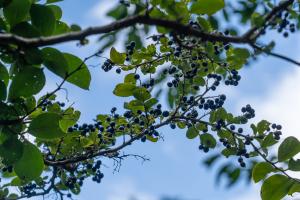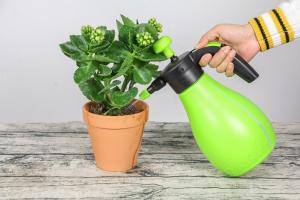Can You Plant Rubber Trees Outside?
Rubber trees (Hevea brasiliensis) are native to South America but have become a popular indoor plant around the world. These trees are known for their attractive foliage and air-purifying capabilities. However, many people wonder if it's possible to grow rubber trees outside. In this article, we'll explore whether you can plant rubber trees in your garden or yard.
Climate Requirements for Rubber Trees
Before we can answer the question of whether rubber trees can be planted outside, we need to consider the climate requirements for these trees. Rubber trees are tropical plants and require a warm, humid climate to thrive. In their native habitat, these trees grow in rainforests with year-round temperatures between 70°F and 90°F.
If you live in a warm, humid climate, such as parts of Florida, Texas, or California, you may be able to grow rubber trees outside. However, if you live in an area with cold winters, you'll need to take special precautions to protect your trees from frost and freezing temperatures.
Choosing the Right Location
If you've determined that your climate is suitable for growing rubber trees, the next step is to choose the right location. Rubber trees require full sun or partial shade, so look for a spot in your garden that receives at least six hours of sunlight a day.
In addition to sunlight, rubber trees require well-draining soil. Avoid planting your tree in a location with heavy, clay soil or poor drainage. If you're unsure about the quality of your soil, consider planting your tree in a raised bed or container filled with high-quality potting soil.
Planting and Care Tips
Once you've chosen the right location, it's time to plant your rubber tree. Dig a hole that's twice as wide and as deep as the root ball of your tree. Gently remove the tree from its container and loosen any matted roots before planting it in the hole.
After planting your rubber tree, water it well and add a layer of mulch around the base. This will help retain moisture and keep the soil cool. Water your tree regularly, especially during periods of drought or heat stress.
Finally, be sure to fertilize your rubber tree every two to three months during the growing season. Use a balanced fertilizer with equal amounts of nitrogen, phosphorus, and potassium. Follow the package instructions for application rates.
Conclusion
In conclusion, rubber trees can be planted outside in warm, humid climates with proper care and attention. Choose a location with well-draining soil and six hours of sunlight a day. Water your tree regularly and fertilize it every two to three months during the growing season.
While rubber trees can be grown outside, they may not reach the same size as trees grown indoors. If you're looking for a larger specimen, consider growing your rubber tree in a container and moving it outside during the summer months.
Whether you choose to grow your rubber tree indoors or outside, with the right care and attention, you'll enjoy a beautiful and healthy plant for years to come.

 how many times do yo...
how many times do yo... how many planted tre...
how many planted tre... how many pine trees ...
how many pine trees ... how many pecan trees...
how many pecan trees... how many plants comp...
how many plants comp... how many plants can ...
how many plants can ... how many plants and ...
how many plants and ... how many pepper plan...
how many pepper plan...





























